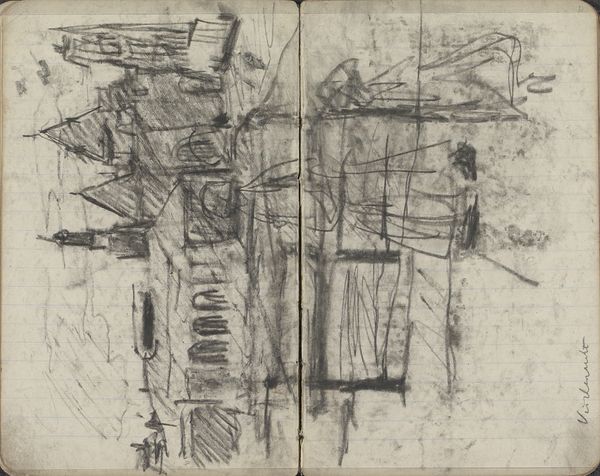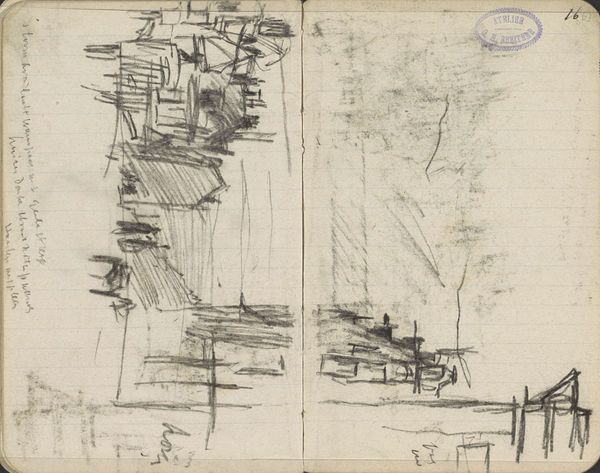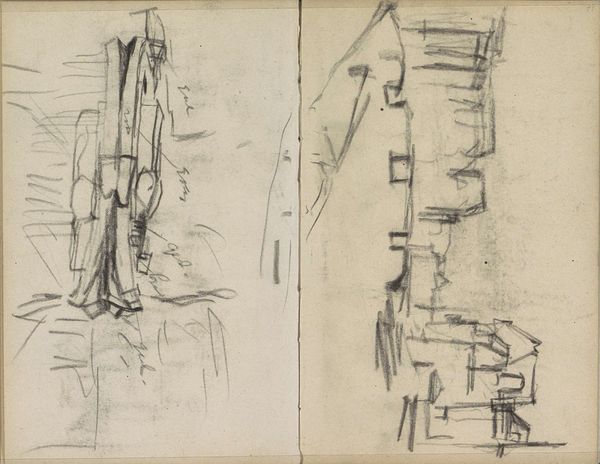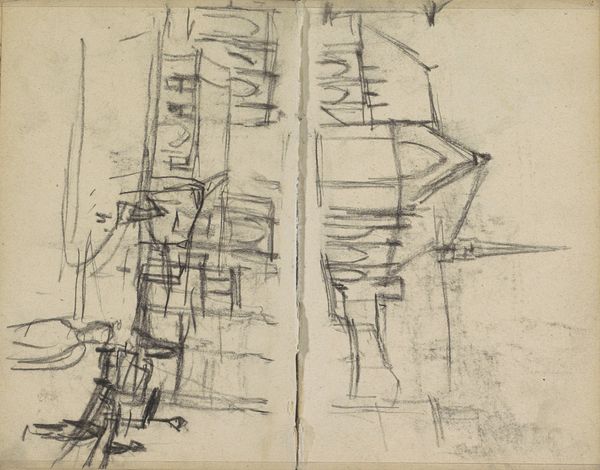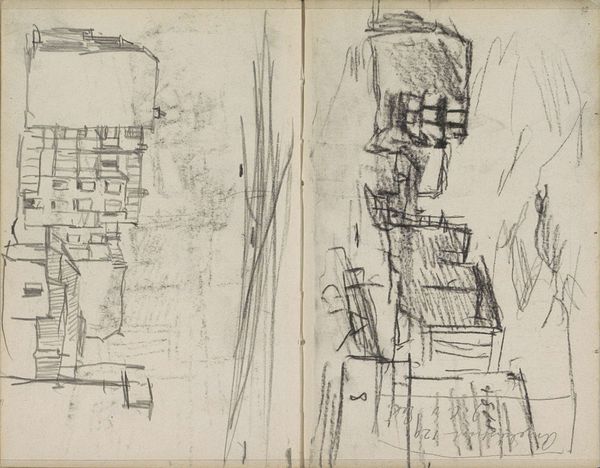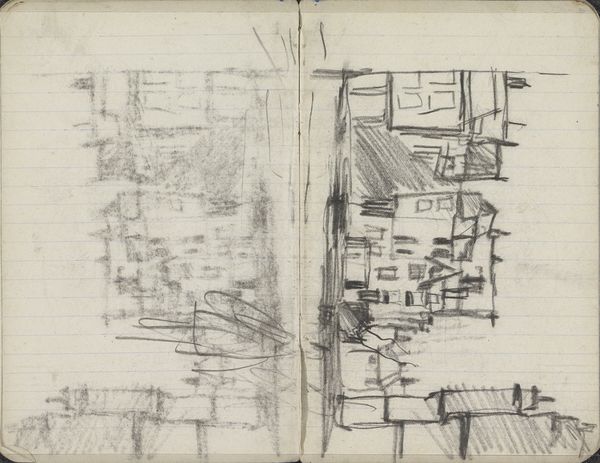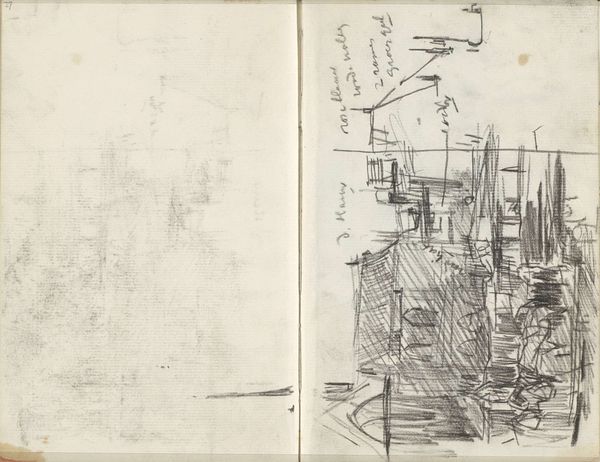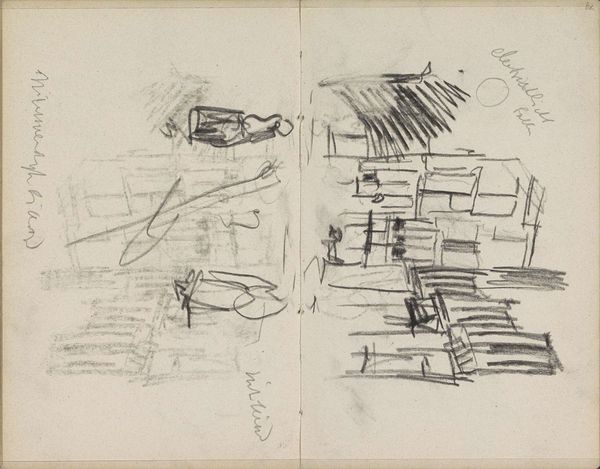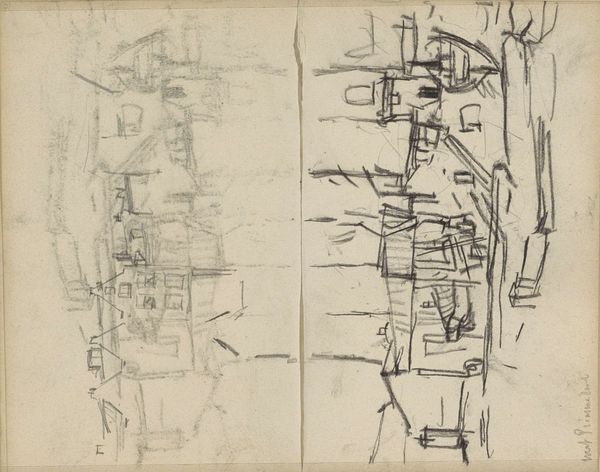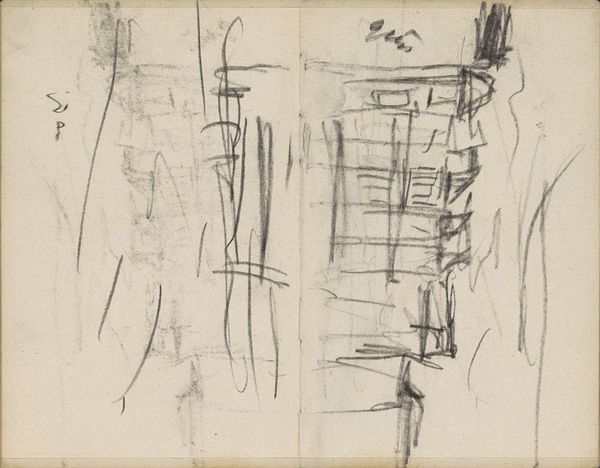
drawing, ink, pencil
#
drawing
#
quirky sketch
#
dutch-golden-age
#
pen sketch
#
incomplete sketchy
#
personal sketchbook
#
ink
#
sketchwork
#
ink drawing experimentation
#
pen-ink sketch
#
pencil
#
sketchbook drawing
#
cityscape
#
sketchbook art
#
initial sketch
Copyright: Rijks Museum: Open Domain
Curator: Here we have George Hendrik Breitner's "Stadsgezicht, mogelijk Amsterdam," dating from possibly 1907 to 1911, held at the Rijksmuseum. It's an ink and pencil drawing on paper. Editor: Immediately, it strikes me as very raw, like a quick impression captured in a moment. The roughness of the pencil and ink makes the cityscape seem almost fragile, provisional. You can almost feel Breitner grappling with the subject. Curator: Yes, the seeming incompleteness is characteristic of his working method. Breitner was very interested in capturing the fleeting nature of urban life. Notice the repetition of forms—those lines suggesting buildings echo elements from Dutch Golden Age cityscapes. What readings do those visual echoes create? Editor: It’s interesting you mention that. It brings forward questions about the means of sketching. Look at the texture— the tooth of the paper almost fights against the fleeting marks Breitner applies to the surface, suggesting a quick, cheap material good for disposable sketches. It brings forward ideas of labor and economic means as it relates to art creation. Curator: Certainly, there is a powerful intimacy in sketchbooks. These are private, liminal spaces where he could experiment with ideas and compositions, often revealing underlying emotions or concerns. I would argue this initial roughness makes us feel like voyeurs looking at the city from his intimate point of view. It provides an image not just of the buildings themselves but of the conditions of modernity. Editor: Agreed. We should not also discount the function and social context surrounding drawing—it is often associated with craft. The materials allow it to be more easily portable as it captures fleeting everyday life. He must’ve created a multitude of these studies for larger pieces or prints. Curator: This raw, sketch-like nature perhaps is a portal. By invoking earlier urban scenes and juxtaposing them with modern techniques, Breitner encourages us to see Amsterdam through a more nuanced lens, one where the past and the present continually negotiate for space. Editor: And, from my vantage point, this evokes an understanding of artistic labor, not solely of high-brow artistic pursuits. In a consumer driven era, sketches are commodities that speak volumes of art history’s material and productive modes. Curator: An intriguing point—this drawing provides us insight into not only Breitner's perspective but the broader cultural memory embedded within cityscapes themselves. Editor: Exactly! A study in social value, as told by a quickly rendered landscape.
Comments
No comments
Be the first to comment and join the conversation on the ultimate creative platform.
